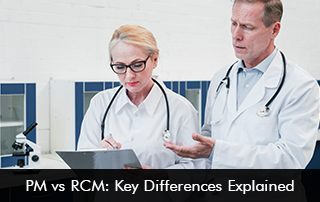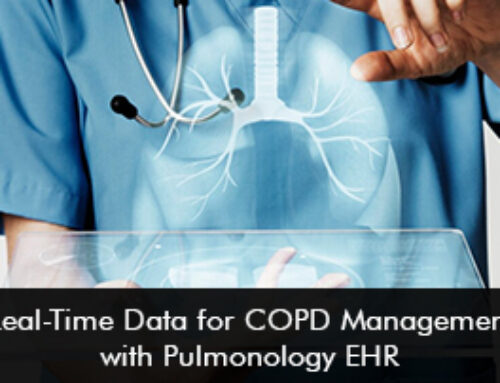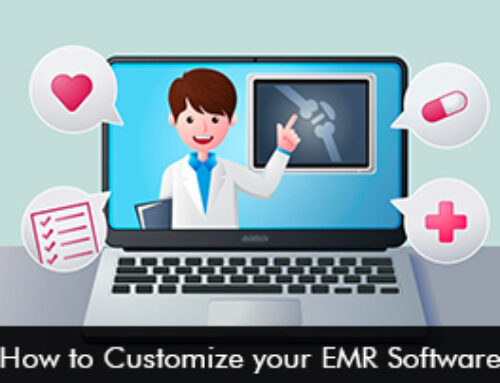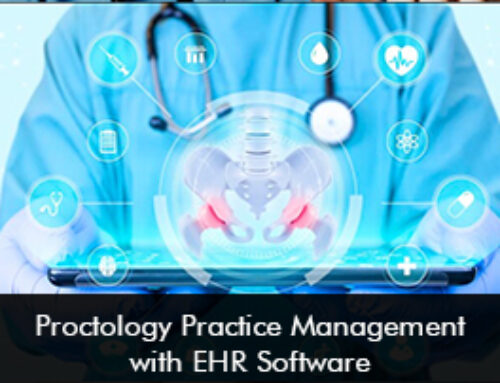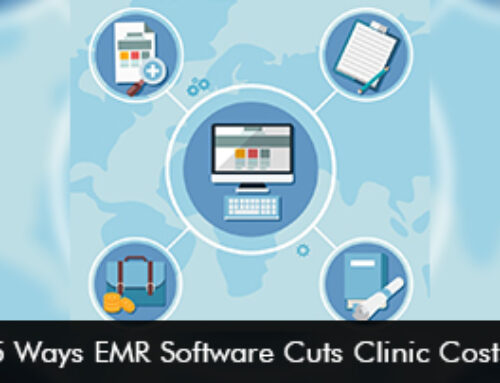In healthcare administration, two critical processes ensure the smooth operation and financial health of medical practices: Practice Management (PM) and Revenue Cycle Management (RCM). While both are essential for running a successful healthcare practice, they serve distinct functions.
Understanding the differences between PM and RCM helps healthcare administrators, physicians, and practice managers optimize operations, improve patient care, and maximize revenue. This blog breaks down their roles, key differences, and how they work together to support a thriving medical practice.
What is Practice Management?
Practice Management (PM) refers to the day-to-day administrative and operational tasks involved in running a healthcare practice. It focuses on streamlining workflows, managing staff, handling patient interactions, and ensuring compliance with healthcare regulations.
Key Functions:
- Appointment Scheduling & Patient Flow – Managing bookings, cancellations, and wait times.
- Staff Management – Hiring, training, and scheduling employees.
- Electronic Health Records (EHR) Management – Maintaining accurate patient records.
- Compliance & Regulations – Ensuring adherence to HIPAA, OSHA, and other healthcare laws.
- Billing & Claims Submission – Basic billing tasks (though deeper financial processes fall under RCM).
Advantages of Effective:
✔ Improves patient satisfaction through efficient scheduling and communication.
✔ Enhances staff productivity with structured workflows.
✔ Reduces administrative errors with organized record-keeping.
Limitations:
❌ Does not fully optimize revenue collection.
❌ May lack deep financial analytics to identify revenue leaks.
What is Revenue Cycle Management?
Revenue Cycle Management (RCM) is the financial process that tracks patient care episodes from appointment booking to final payment collection. It ensures that healthcare providers are reimbursed accurately and promptly for services rendered.
Key Functions:
- Patient Eligibility Verification – Confirming insurance coverage before appointments.
- Medical Coding & Charge Capture – Assigning correct CPT, ICD-10, and HCPCS codes.
- Claims Submission & Denial Management – Filing claims and resolving rejections.
- Payment Posting & Accounts Receivable Follow-Up – Tracking payments and chasing unpaid claims.
- Reporting & Analytics – Identifying trends in denials, underpayments, and revenue leaks.
Advantages:
✔ Maximizes revenue by reducing claim denials and underpayments.
✔ Accelerates cash flow with efficient claims processing.
✔ Provides financial insights to improve practice profitability.
Limitations:
❌ Inefficient front-office operations can delay billing processes.
❌ Poor patient intake processes lead to eligibility and coding errors.
Key Differences Between PM and RCM
| Factor | Practice Management | Revenue Cycle Management |
|---|---|---|
| Primary Focus | Daily operations & patient experience | Financial health & reimbursement |
| Key Processes | Scheduling, staffing, and compliance | Coding, billing, claims, collections |
| Impact on Revenue | Indirect (efficiency affects billing speed) | Direct (optimizes reimbursements) |
| Technology Used | EHR, scheduling software | Medical billing software, clearinghouses |
| Best Managed By | Office managers, front-desk staff | Medical billers, coders, and RCM specialists |
| End Goal | Smooth practice operations | Maximized revenue & reduced claim denials |
How PM and RCM Work Together
While PM and RCM serve different purposes, they are deeply interconnected:
- Patient Scheduling (PM) → Eligibility Check (RCM)
- A well-managed front desk (PM) ensures accurate patient data, which helps RCM verify insurance upfront.
- Clinical Documentation (PM) → Medical Coding (RCM)
- Proper EMR documentation (PM) leads to correct coding (RCM), reducing claim denials.
- Claims Submission (RCM) → Follow-Up & Reporting (PM & RCM)
- If a claim is denied, both teams collaborate to resolve issues (e.g., missing patient info or incorrect coding).
Example of PM & RCM Collaboration:
- Scenario: A patient arrives for an appointment.
- PM Role: Front desk checks them in, updates records, and collects copays.
- RCM Role: Back office verifies insurance, codes the visit, submits the claim, and follows up on unpaid balances.
A breakdown in either process leads to delays, denied claims, or lost revenue.
When to Focus on PM vs. RCM?
Prioritize Practice Management If:
- Patient wait times are long, and staff efficiency is low.
- Compliance risks (HIPAA, OSHA) are a concern.
- The practice is growing, and workflows need restructuring.
Prioritize Revenue Cycle Management If:
- Claim denials are high (above 5-10%).
- Cash flow is slow due to delayed reimbursements.
- The practice is losing revenue from undercoding or missed charges.
Best Practice: A healthcare organization should invest in both for optimal performance.
Two Sides of the Same Coin
- PM keeps the practice running smoothly, ensuring patient satisfaction and compliance.
- RCM secures the financial backbone, maximizing reimbursements and profitability.
The most successful medical practices integrate both systems seamlessly, using technology (like integrated EHR & billing software) and cross-trained staff to bridge the gap.
Does your practice struggle more with operations (PM) or revenue (RCM)? Share your challenges below!


